Parrotfeather identification and control
Information about the aquatic noxious weed parrotfeather. Parrotfeather is also known by its Latin name, Myriophyllum aquaticum.
About this weed
Parrotfeather is a regulated Class B noxious weed. This means control is required in King County under the state noxious weed law.
Parrotfeather, known as Myriophyllum aquaticum, is in the water milfoil family. Other common names include water-feather, Brazilian watermilfoil, two-leaved watermilfoil, broadleaf watermilfoil, and coontail moss.
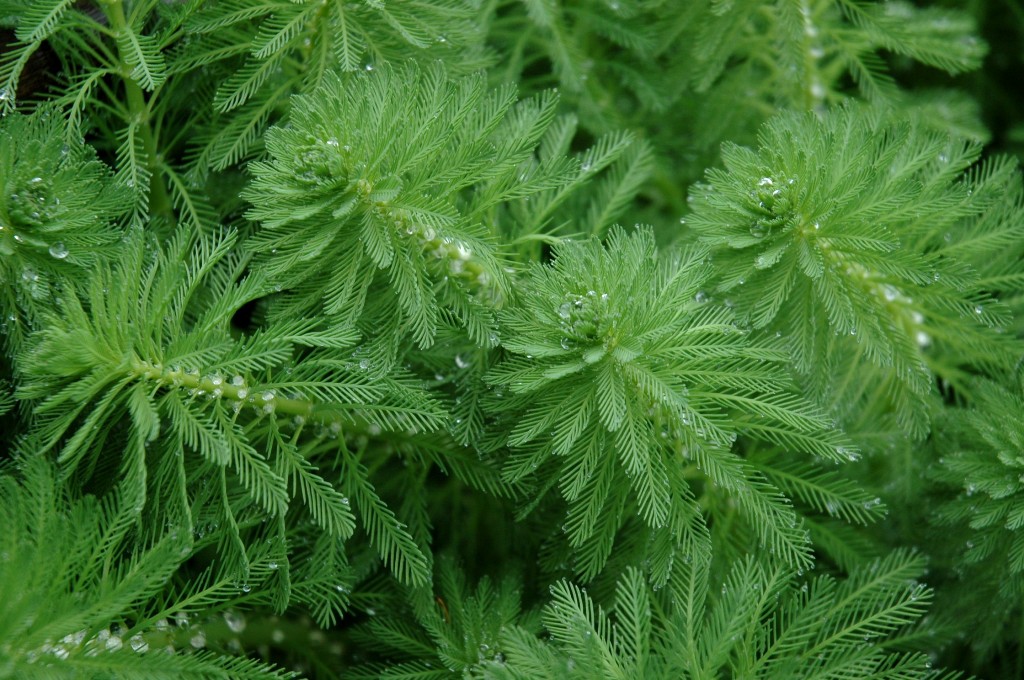
Why it's a problem
Although parrotfeather is a native of the Amazon River in South America, it has naturalized throughout the world. In Washington State it has become established in several drainage systems and even small infestations are highly challenging to control. Although it doesn't grow in deep water, parrotfeather can completely cover and fill in shallow water. The dense growth causes problems for boating, swimming, fishing or other water recreation. It encourages mosquito growth and can increase flooding. In rivers, it can impact salmon habitat, especially in side channels where juvenile salmon rear.
Plant description
Parrotfeather forms dense mats of vegetation and can be found growing along lake and pond edges and slow-moving waterways. Even when attached to the bank, stems can extend several yards out over the water's surface, and it has also been found growing as a floating mat in some lakes. It has even been found growing up onto the soil along the edges of ponds.
In King County, parrotfeather is mostly found in private ponds. However, in other parts of the state, it is found in drainage canals, lakes, and rivers. For instance, parrotfeather is found throughout the drainage system of the Longview/Kelso area. In King County, parrotfeather emerges in late May and persists into October.
Parrotfeather is a submerged aquatic plant with both above and below water leaves. Plants grow up to 16 feet long underwater and up to 1 foot out of the water.
Leaves are feather-like and arranged in whorls of 4 to 6 leaves. Above water leaves are bright green and look like little fir trees or horsetail plants. Underwater leaves are darker and look feathery, like other milfoil species.
Spikes of feathery leaves emerge up to 1 foot above the water, looking like miniature pine trees growing on the water's surface. Below the water, the leaves are less stiff and closely resemble other types of milfoil, but the plant is easily distinguished by its stiff, bright green upper stems. The feathery leaves grow in whorls of four to six (meaning that there are four to six "feathers" attached at the same point on the stem that radiate out in a circle around the stem).
Stems are robust, even under water, and roots form along the stem.
Flowers are white, tiny and inconspicuous and are found where the above-water leaves attach to the stems.
Because all plants in the United States are female, parrotfeather doesn't form seeds but it does spread readily by fragmentation of stems and rhizomes.

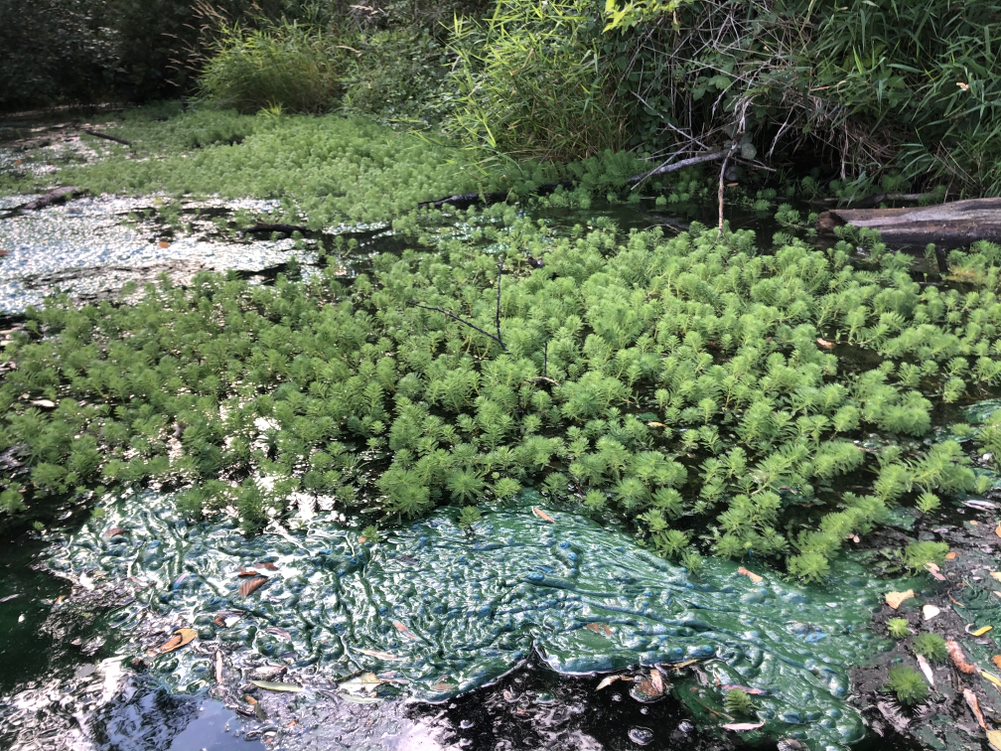
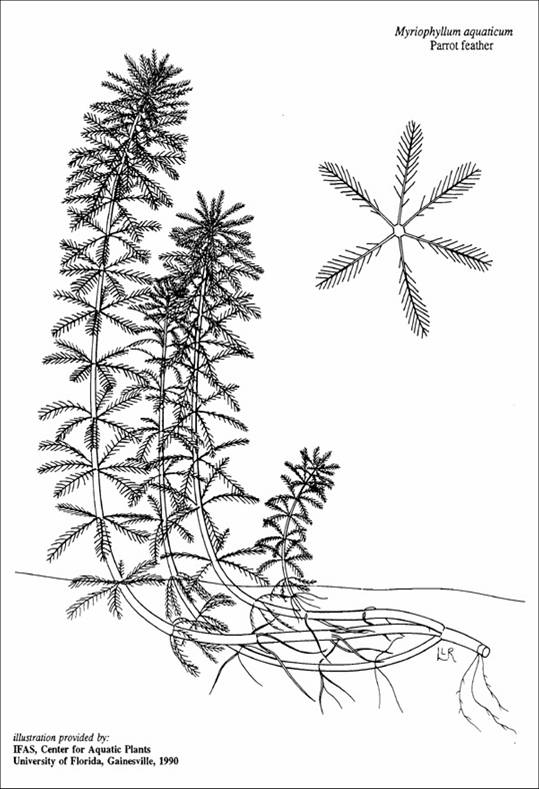
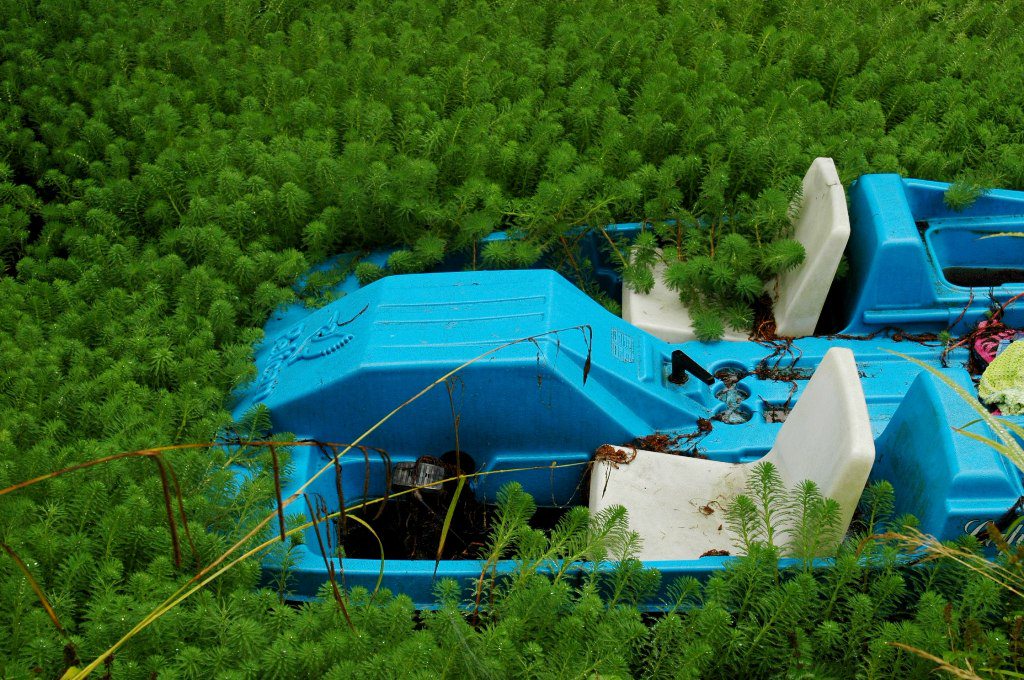
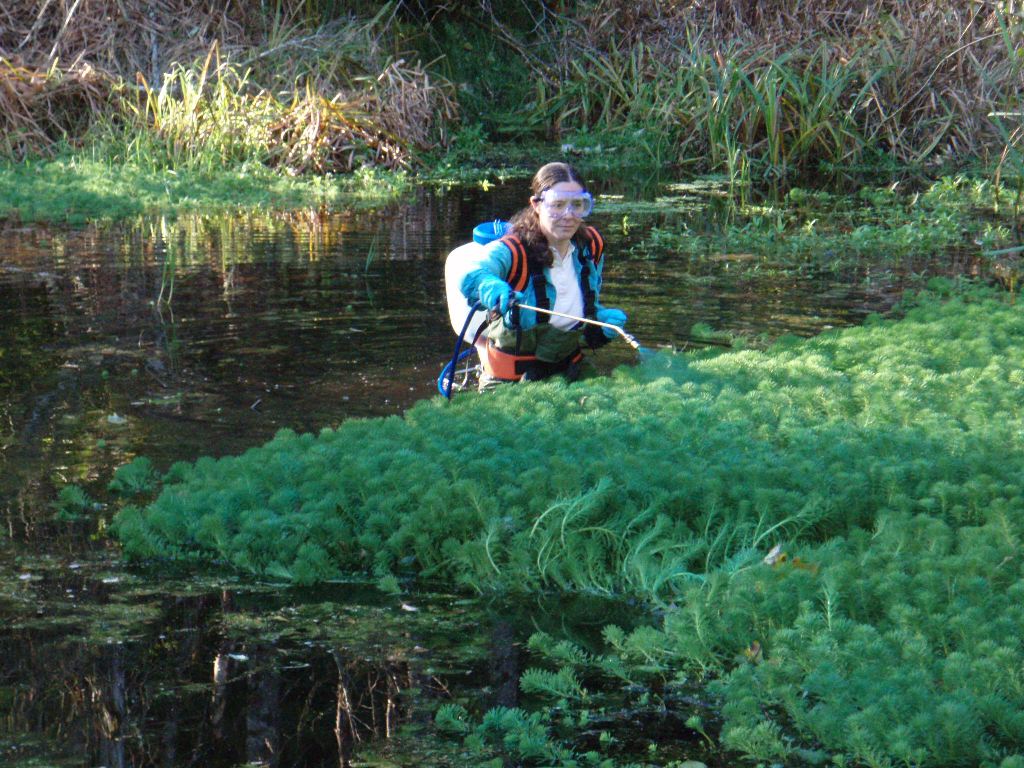
Be aware of look-alike plants
Parrotfeather is often confused with:
Eurasian watermilfoil Hydrilla Native milfoil species
When in doubt, take photos and share them with us or report them on iNaturalist.
What to do if you find it
Property owners are required to control parrotfeather on their property. Please notify us if you see parrotfeather growing in King County.
Our program staff can provide you with site-specific advice on how best to remove it. Also, because parrotfeather is not established in King County, we have an opportunity to stop it from spreading if we act quickly.
We map all known locations of regulated noxious weeds to help locate new infestations in time to control them.
Control methods
We recommend using a combination of methods to control noxious weeds. In areas with few weeds, it is important to act quickly before they become harder to control. Make a long-term plan as it often takes several years to get rid of most weeds. Start in the least infested areas first and then move into more heavily infested areas.
Manual/Mechanical control
Aquatic plant control that does not involve herbicide may require a (free) permit. The rules and regulations for this type of removal will depend on your circumstance, please visit the WA Dept Fish and Wildlife for access to their Aquatic Plants & Fish Pamphlet and guidance on how to use it properly.
The roots of the plant easily become entangled with other plants in the mud and lake sediment, making through removal very difficult. Small patches may be controlled by very careful hand pulling.
Mechanical methods such as cutting, harvesting and underwater tilling are not effective. These methods can increase infestations by spreading plant fragments that may root in uninvaded areas.
Chemical control
Stay safe when using herbicide:
- Always read the label before use.
- Wear a long-sleeved shirt, long pants, shoes, and eye protection.
- Follow state and local regulations.
Larger patches will need herbicide treatments to be effective.
Avoid spraying where there is a chance that herbicide will enter a waterway or wetland unless you are using a state-approved aquatic herbicide and have the required permits and licenses to do so. Use of pesticides in water is regulated in Washington state. See Washington Department of Ecology Aquatic Pesticide Permits for details.
For more information or a site-specific recommendation in King County, contact the noxious weed program. For information in other locations, contact your local weed board or extension office.
Disposal instructions
Manual/mechanical removal is not recommended. If you are only dealing with a few plants and manual removal is realistic, dispose of all plant parts in garbage.
Noxious Weed Disposal - Washington State Noxious Weed Control Board

 Translate
Translate